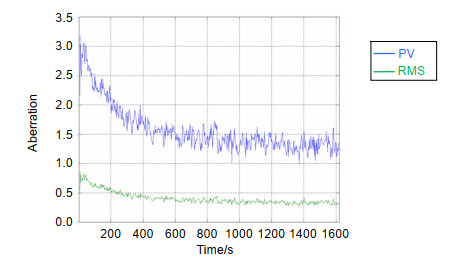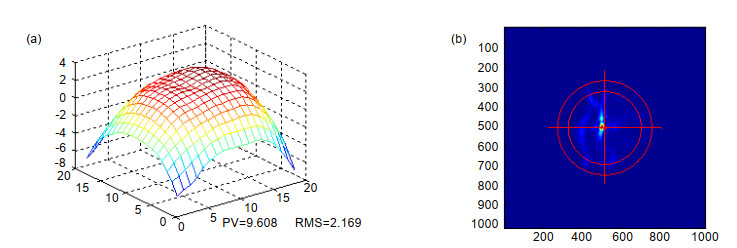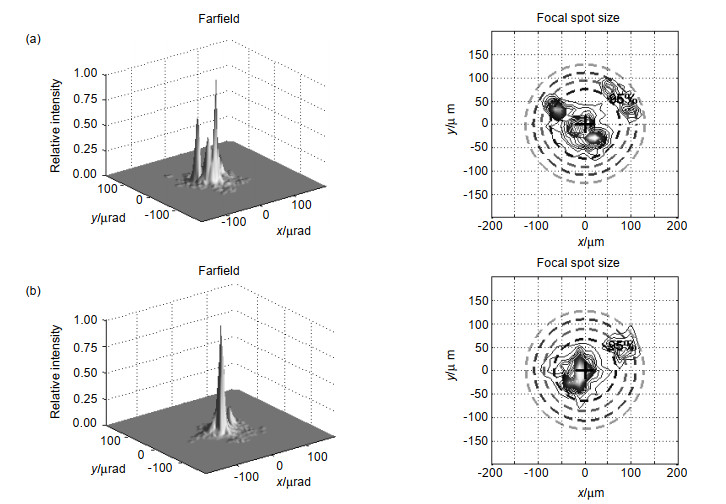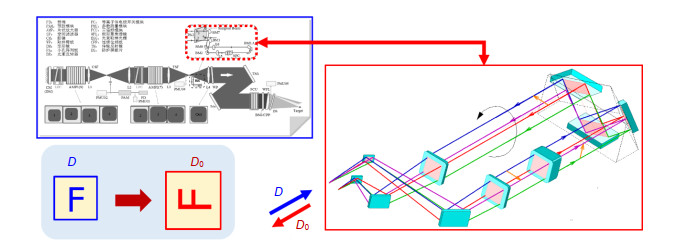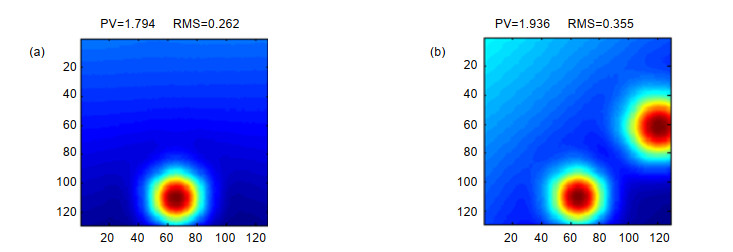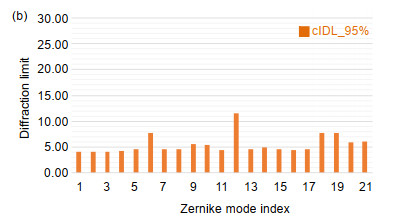-
摘要
在惯性约束聚变(ICF)高功率激光装置中,自适应光学波前控制技术是确保装置安全顺畅通光以及光束质量达标的关键技术之一。本文介绍了我国ICF激光装置中波前控制技术从概念的提出到大规模应用的研究和发展历程,重点介绍了在装置不同发展阶段针对装置的需求所研究和发展的关键系统技术,包括基于远场焦斑优化的爬山法波前控制技术、基于双波前传感器数据融合的全装置波前控制技术,以及旋转腔激光装置结构中基于双变形镜的全系统波前控制技术,并介绍了相关技术在装置上的应用结果。
Abstract
In the high-power laser system for inertial confinement fusion, wavefront control is one of the key technologies for the laser system to ensure it operates safely and reaches the beam quality criteria. In this article, the development of the wavefront control technology from its first being putting forward for the ICF laser system to its application in the latest ICF laser system in China was introduced. During the development of the ICF facilities, the wavefront control methods are varying to satisfy the varied demands promoted by these facilities. Based on different facilities, the methods and the application results are illustrated, including the climbing wavefront method for far-field spot optimization, the full-facility wavefront control method based on the data fusion acquired from two wavefront sensors, and the full-system wavefront control method with bi-deformed mirrors in the rotation chamber laser structure.
-
Overview

Overview: Inertial confinement fusion (ICF) is one of the most important controllable nuclear fusion processes by confining particles using the inertial effects. A fuel target, typically in the form of a pellet containing the mixture of deuterium and tritium, is converted to plasma by heating and compressing with high-energy beams of laser light. These plasmas explodes and produces sufficient shock waves to compress and heat the fuel at the center, which makes the fusion reaction occur. This article introduces the typical structure of an ICF system first. The effects of wavefront distortion of the laser beams are analyzed. It shows that the wavefront distortion may affect the near-filed beam quality and reduce the efficiency of the triper device and focusing. Therefore, wavefront distortion must be effectively controlled to meet the needs of the safety of facilities and the physical parameters to realize the ICF process.
The wavefront control methods are illustrated by introducing the development from SG-Ⅰ (LF12), SG-Ⅲ prototype (TIL) to SG-Ⅲ facility. In LF12, climbing algorithm was utilized in adaptive optics (AO) to optimize the far-field quality. It disturbed the elements of the controller to get the highest peak energy, and the peak energy increased 3 times with the AO system. It was the first time that wavefront aberration in ICF system was compensated by AO. It revealed that it was possible to employ the active wavefront control method in these high-energy laser systems to improve their optical quality. Since then, AO system became a standard component in the ICF facilities.
In TIL, 45-element deformed mirrors with the size of 70 mm×70 mm were employed in the prime-amplification system. Bi-wavefront-sensor fusion technique was utilized for system-wide wavefront control. Two Shack-Hartmann wavefront sensors were used. One was located in the parameter-diagnose package to compensate the wavefront aberration in the prime-amplification system. The other one was placed to the fuel target for the system wavefront measurement, and the result was passed to the first sensor for close-loop control. Without AO, 95% of the total energy was gathered in the zone of size 15 times diffraction limit (DL), and the Strehl ratio was 0.02. After compensation, the values were 7 and 0.46, respectively, and the focusing performance was enhanced significantly.
The "U-type reversion + 90° rotation + aperture transformation" configuration, one of the main characters that makes the SG-Ⅲ different from all other ICF facilities in the world, brought challenges to the AO system. 39-element deformed mirrors with the size of 340 mm× 340 mm were used as chamber mirrors for the wavefront compensation of the static and dynamic aberration in the prime-amplification system. 77-element deformed mirrors, placed close to the fuel target, correct the residual wavefront correction after the prime-amplification system. The result showed that both the near-field and far-field distributions were improved remarkably, 95% energy was concentrated in 10DL, which guarantees the full-energy operation stage of the SG-Ⅲ facility.
-

-
-
参考文献
[1] 姜文汉.自适应光学发展综述[J].光电工程, 2018, 45(3): 170489. doi: 10.12086/oee.2018.170489
Jiang W H. Overview of adaptive optics development[J]. Opto-Electronic Engineering, 2018, 45(3): 170489. doi: 10.12086/oee.2018.170489
[2] 姜文汉, 张雨东, 饶长辉, 等.中国科学院光电技术研究所的自适应光学研究进展[J].光学学报, 2011, 31(9): 0900106. http://qikan.cqvip.com/Qikan/Article/Detail?id=39153640
Jiang W H, Zhang Y D, Rao C H, et al. Progress on adaptive optics of Institute of Optics and Electronics, Chinese Academy of Sciences[J]. Acta Optica Sinica, 2011, 31(9): 0900106. http://qikan.cqvip.com/Qikan/Article/Detail?id=39153640
[3] 姜文汉, 杨泽平, 官春林, 等.自适应光学技术在惯性约束聚变领域应用的新进展[J].中国激光, 2009, 36(7): 1625-1634. http://www.cqvip.com/Main/Detail.aspx?id=31027509
Jiang W H, Yang Z P, Guan C L, et al. New progress on adaptive optics in inertial confinement fusion facility[J]. Chinese Journal of Lasers, 2009, 36(7): 1625-1634. http://www.cqvip.com/Main/Detail.aspx?id=31027509
[4] Zuegel J D, Borneis S, Barty C, et al. Laser challenges for fast ignition[J]. Fusion Science and Technology, 2006, 49(3): 453-482. doi: 10.13182/FST06-A1161
[5] Sacks R A, Auerbach J M, Bliss E S, et al. Application of adaptive optics for controlling the NIF laser performance and spot size[J]. Proceedings of SPIE, 1999, 3492: 344-354. doi: 10.1117/12.354146
[6] Jiang W H, Zhang Y D, Xian H, et al. A wavefront correction system for inertial confinement fusion[C]//Proceedings of the 2nd International Workshop, Adaptive Optics for Industry and Medicing, 2015: 8-15.
[7] Jiang A W, Huang S F, Ling N, et al. Hill-climbing wavefront correction system for large laser engineering[J]. Proceedings of SPIE, 1989, 965: 266-272. doi: 10.1117/12.948042
[8] 姜文汉, 黄树辅, 吴旭斌.爬山法自适应光学波前校正系统[J].中国激光, 1988, 15(1): 17-21. http://www.cnki.com.cn/Article/CJFD1988-JJZZ198801004.htm
Jiang W H, Huang S F, Wu X B. Hill-climbing adaptive optics wavefront correction system[J]. Chinese Journal of Lasers, 1988, 15(1): 17-21. http://www.cnki.com.cn/Article/CJFD1988-JJZZ198801004.htm
[9] 杨慧珍, 李新阳, 姜文汉.自适应光学系统几种随机并行优化控制算法比较[J].强激光与粒子束, 2008, 20(1): 11-16. http://d.wanfangdata.com.cn/Periodical/qjgylzs200801003
Yang H Z, Li X Y, Jiang W H. Comparison of several stochastic parallel optimization control algorithms for adaptive optics system[J]. High Power Laser and Particle Beams, 2008, 20(1): 11-16. http://d.wanfangdata.com.cn/Periodical/qjgylzs200801003
[10] Yang Z P, Li E D, Wang H Y, et al. Adaptive optical system for a large-aperture Nd: glass laser for ICF[J]. Proceedings of SPIE, 2004, 5639: 21-27. doi: 10.1117/12.580425
[11] Zhang Y D, Yang Z P, Duan H F, et al. Characteristics of wavefront aberration in the single beam principle prototype of the next-generation ICF system[J]. Proceedings of SPIE, 2002, 4825: 249-256. doi: 10.1117/12.451984
[12] Zhang Y, Yang Z, Guan C, et al. Dynamic aberrations correction in an ICF laser system[M]//Wittrock U. Adaptive Optics for Industry and Medicine. Berlin, Heidelberg: Springer, 2005: 261-271.
[13] 杨泽平, 李恩德, 张小军, 等. "神光-Ⅲ"主机装置的自适应光学波前校正系统[J].光电工程, 2018, 45(3): 180049. doi: 10.12086/oee.2018.180049
Yang Z P, Li E D, Zhang X J, et al. Adaptive optics correction systems on Shen Guang Ⅲ facility[J]. Opto-Electronic Engineering, 2018, 45(3): 180049. doi: 10.12086/oee.2018.180049
-
访问统计


 E-mail Alert
E-mail Alert RSS
RSS

 下载:
下载:

